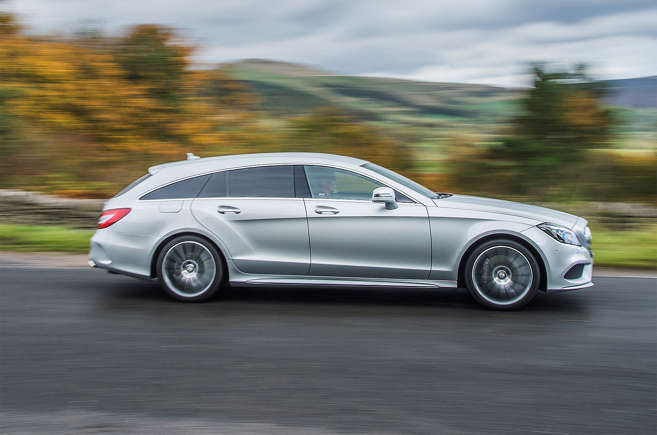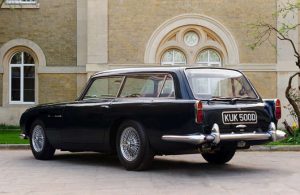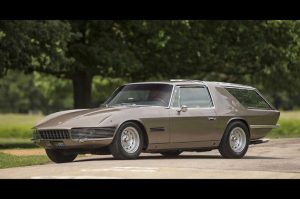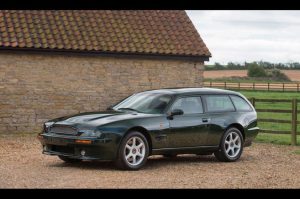What’s the difference between an estate cars and a shooting brake cars?
A lot has been lost in the mists of time and marketing, but the latter has to have some sass to its styling. Practicality isn’t the overriding concern of most shooting brakes, but added load space is certainly handy. Here’s our run-down of the best conversions and factory-fitted fast-back wagons:
The first Aston Martin shooting brake was created for none other than company owner David Brown of ‘DB’ fame. This was created in-house, but when customers spotted it they wanted one too. So, Aston brought in coachbuilder Harold Radford to turn DB5s and 6s into estate cars. Everything from the windscreen rail back was new, so there was decent headroom and load space.
However, the conversion added 50% to the already hefty cost of a new Aston Martin, which explains why only 12 DB5s were made and half a dozen DB6s.
Even by Ferrari standards, this 330 GT Shooting Brake is sensationally styled. Conceived by Luigi Chinetti Jnr, son of the US Ferrari importer, and Alfredo Vignale, the pair took a standard 330 and stripped it.
The only original body parts left are the windscreen and some door parts. Everything else is handcrafted and was originally finished in dark metallic green. This was how Jamiroquai frontman Jay Kay owned it, but it was subsequently painted a light gold colour.
Harking back to the 1960s DB conversions, the V8 Vantage Sportsman Estate used a whole new roof section to free up extra luggage space.
It took Swiss firm Roos 1,800 hours to craft this machine, which was hailed as the fastest estate in the world when completed. The German customer insisted the Aston was capable of carrying a set of skis inside, which makes you wonder how this car managed on snowy Alpine roads.
Ogle deserves credit for popularising the shooting brake style with its Glazing Test Special, which was commissioned by the Triplex Glass Company to showcase its Sundym glass.
With curved sections of glass for the front half of the roof and side windows that extend into rear part, the GTS wowed crowds at the 1965 London Motor Show. It was supposed to make further show appearances, but only made it to Turin that year as the Duke of Edinburgh requested it as his personal car and used it for two years.
Jensen helped build the early Volvo P1800 coupé but not the ES estate, which may explain why it took until 1975 for the British firm to catch on to the popularity of sporty shooting brakes.
The resulting Jensen GT used the previous Jensen-Healey as its base, albeit with reliability and quality niggles sorted. It was a useful load carrier and the Lotus engine gave spirited performance, but sales never took off and only 473 were sold when the shutters came down in 1976.
With such a mixed parentage, this Ferrari Daytona Shooting Brake could have ended up as a muddled design. However, with Italian mechanicals, a wealthy American owner and British coachbuilding it became one of the most jaw-dropping expressions of the form.
Owner Bob Gittleman commissioned the car and UK firm Panther Westwinds made it happen. Access to the load bay is through top-hinged gullwing glass panels, but don’t expect much space in the wood- and leather-lined compartment.
Reliant cottoned on to the success of the Ogle GTS very quickly, which was based on a Scimitar coupé. The Tamworth firm came up with its own GTE in 1968 with design help from Tom Karen of Ogle.
With four individual seats and a large boot, the GTE was an instant hit, helped by lusty performance from its Ford-sourced 3.0-litre V6 motor. Princess Anne was an early and devoted customer, which also added extra glamour to the Reliant.
Volvo and estates: yeah, yeah, old news. Well, not with the 1800ES, which was one of the pioneers of the lifestyle wagons we know and love to buy today.
It was a bold move to turn the ageing 1800 coupé into a shooting brake to keep the model alive, but it worked brilliantly and 8077 were sold between 1971 and 1973. The single-piece glass rear hatch was innovative at the time and was revived for the 480ES in 1986.
Underneath the sleek lines of this one-off Aston Martin EG lies the mechanical components of a Vanquish. Designed by Francesco Boniolo, the name comes from the original owner’s initials.
It’s 600mm longer than the base car and has a rear hatch for quick access to the wood-lined boot. The roof has an Isolite glass panoramic panel that can be darkened at the flick of a switch to shade the cabin.



